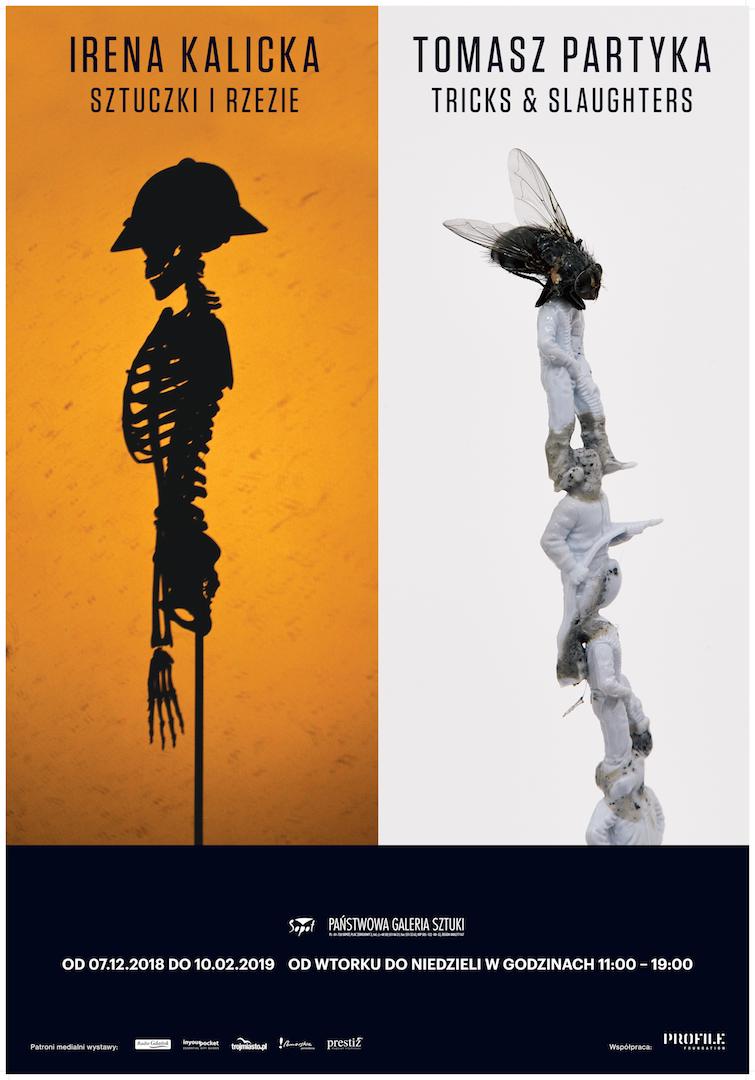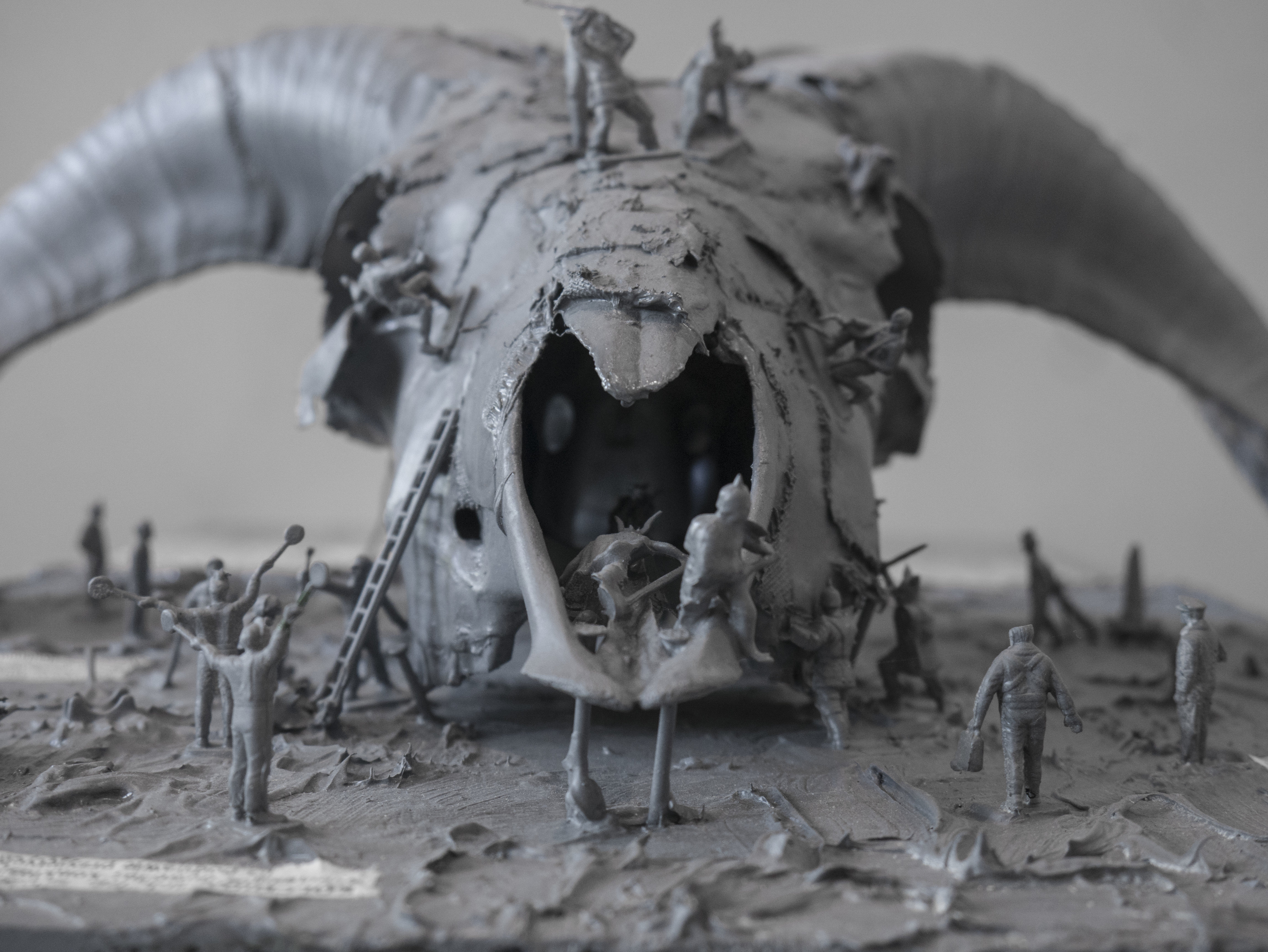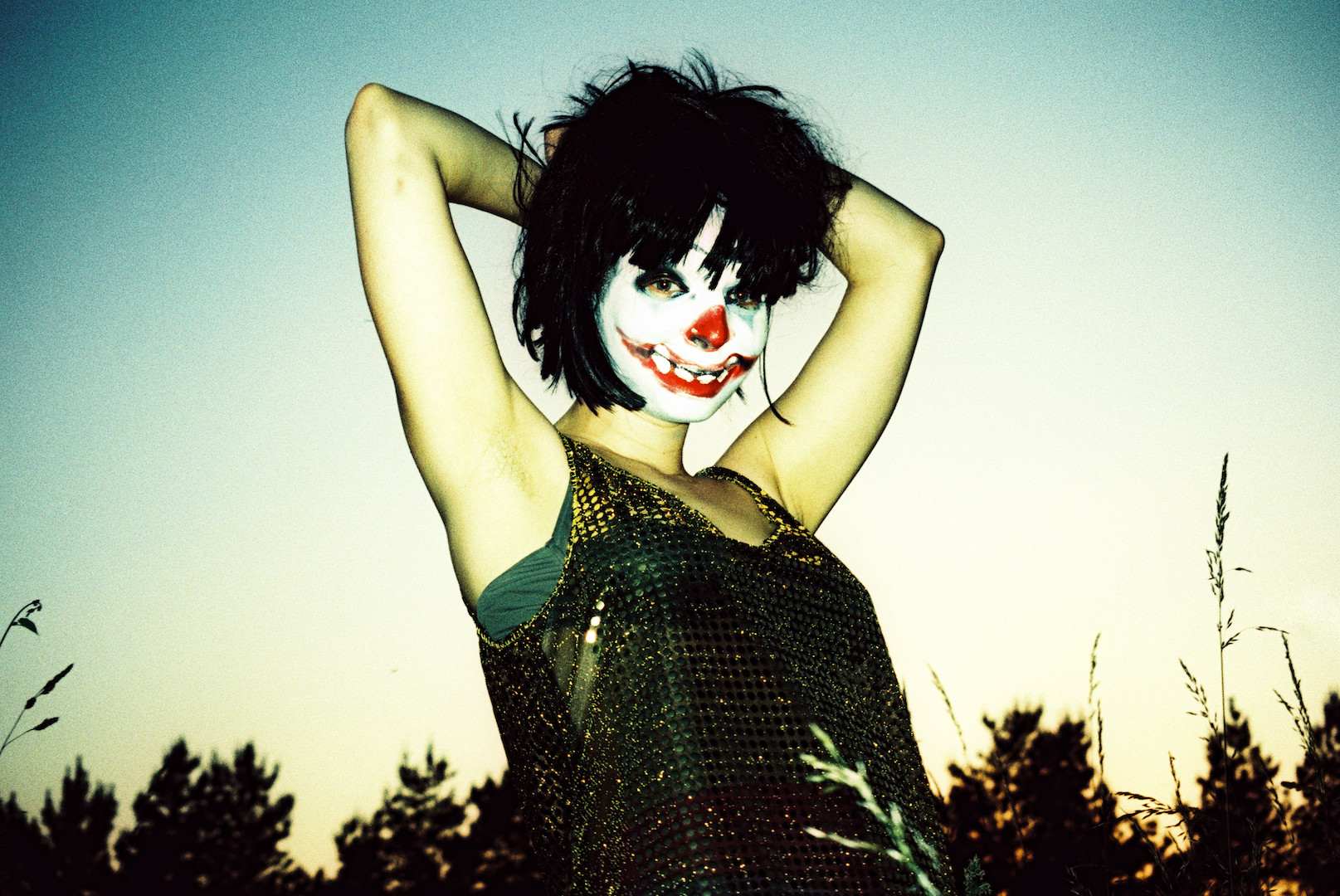
Exhibition at Państwowa Galeria Sztuki in Sopot
December 7, 2018 – February 10, 2019
Exhibition curator: Bożena Czubak
Exhibition: from Tuesday to Sunday, 11 AM- 7 PM
Opening: December 6, 2018, 7.30 PM
Tricks and Slaughters is an exhibition that brings together the works of Irena Kalicka and Tomasz Partyka, a photographer and a painter, respectively. On the surface, the two seem to share little: different schools, traditions, references, media, themes. But despite those differences, Kalicka’s and Partyka’s artworks reflect a similar a tendency to distort images of reality, to suspend the symbolic and social order, to suck the viewer into a world where no norms or principles apply any more.
Kalicka’s photographs show bizarre characters, people with animal heads, clowns, fake Africans. Posed or captured in snapshots, they usually appear amused, sometimes rowdy, not loathe of perversity or crude gestures. In Partyka’s works, in turn, nothing is certain, words disconnect from their meanings, myths are deconstructed, and utopias produce their own ruins. The successive episodes of his “little slaughters” are played out in dimensional compositions with labyrinthine forms and throngs of tiny figurines.
Both Kalicka and Partyka like to allude to art history, to particular themes, motifs, or images, but despite those clear references, their works resonate strongly with the present, with a reality that is hard to accommodate.
Kalicka piles up stereotypes and popular notions, punning on them mischievously. She stirs the imagination, kindled by phantasms, in re-enactments of medieval motifs performed by characters who inscribe contemporary narratives in these representations. Her choices of theme are informed by contemporary culture, the visuality of art and popular culture, by images that, like colloquial language, absorb the rhetorics of postcolonial discourse, gender studies, queer theory, and the increasingly vocal narratives of nationalism, gender, or racism. Kalicka’s eclectic mise-en-scènes – photographs featuring characters like thekrakowianka folk dancer, traditionally-clad góral highlanders, the recidivist, His Holiness, football fans, or faux Africans – play out contemporary culture’s tendency to folklorize, exoticize, demonize, but also to rework artistic themes into sentimental pulp. This isn’t just about the ambiguities of the visible, but also about the ambivalences hidden beneath its surface or, in other words, about temptations that are sometimes worth confronting.
Despite their quotations from or allusions to old art, Partyka’s Little Slaughters, with their apparent or feigned chaos, are preoccupied with the present, providing a sarcastic commentary on the “here and now,” or rather a collection of visualized scripts for such a commentary. The artist populates the installations with plastic figurines, toy soldiers, in fact, that have been “demilitarized,” their swords, guns, or bayonets cut off. The figurines have been burnt, deformed, pierced with wire, beheaded, mutilated and massacred in all kinds of ways; mired in hardened paint, crowded in tight spaces, they freeze in gestures of incomprehensible rituals. Reaching for toys can be like opening Pandora’s box: the demons dormant in their twisted, distorted forms are awoken, bringing to light the underside of the idealized innocence of the world. In the sceneries of the “little slaughters,” the surreptitious aesthetic of toy art serves as a means of playing a game with an obnoxious reality where everyday practices of public life turn into paint-dripping butchery.
What the otherwise very different works of Kalicka and Partyka have in common is their ambition to disturb the latent demons of culture, a logic of carnival or disaster, both equally reversing existing hierarchies with rampant lawlessness and unbridled licence.


